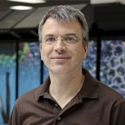Nuclear Theory
The atomic nucleus is the tiny center of an atom that contains practically all its mass. About 92 elements occur naturally on Earth, and these come in about 288 isotopes, characterized by the number of neutrons in the nucleus. In laboratories, however, more than 3,000 isotopes have been created, and thousands more are expected to exist.
These short-lived isotopes differ from the stable matter that surrounds us by an unusual ratio of protons and neutrons. The unusual proton-to-neutron ratio leads to profound changes in the structure of short-lived isotopes, and their understanding is key to answering questions about the nature of neutron stars, the origin of elements heavier than iron, and the end of the lives of massive stars. They are also fascinating quantum many-particle systems that display a very wide range of behavior, and this makes their study interesting in itself.
In recent years, nuclear theory has made important steps toward a much-improved and unified description of short-lived isotopes. Effective field theories (EFTs) of quantum chromodynamics (QCD), the theory of the strong interaction between quarks and gluons, enable us to derive and understand the nuclear forces in a systematic way. The ever-increasing availability of computational cycles allows us to compute the atomic nucleus without making uncontrolled approximations.
Effective field theories exploit a separation of scales and aim at describing a given physical system systematically and most economically. They are central to the research of the UTK-ORNL Nuclear Theory Group. We optimize nuclear forces based on EFTs of QCD for the description of medium-heavy nuclei. We employ and develop EFTs to describe and understand halo nuclei, i.e. exotic nuclei with very weakly bound nucleons that orbit the nucleus at an unusually large distance. We developed an EFT for the description of low-lying collective excitations in deformed rare earth and actinide nuclei. Using the supercomputers at ORNL, we have driven first-principles calculations of atomic nuclei to medium-heavy nuclei. Much of our research involves domestic and foreign collaborators, and we are members of the SciDAC-3 NUCLEI collaboration.
The description of heavier nuclei is not yet possible with first-principles calculations, but their structure is important to understanding the interaction between nucleons and the properties of neutron stars. In the UTK-ORNL Nuclear Theory group, we use phenomenological and mean-field models to describe both heavy nuclei which can be produced on earth, as well as more exotic materials like the neutron star crust.

Thomas Papenbrock
Professor (Joint Faculty)
tpapenbr@utk.edu
Web Page

Lucas Platter
Associate Professor (Joint Faculty)
lplatter@utk.edu
Web Page

Andrew W. Steiner
Associate Professor (Joint Faculty)
awsteiner@utk.edu
Web Page
- Getting Under the (Neutron) Skin
- Steiner Elected APS Fellow
- NSF Awards $3.25 Million to the University of Tennessee, Knoxville, and Partners to Study Neutron Star Mergers
- Multi Messenger Astronomy
